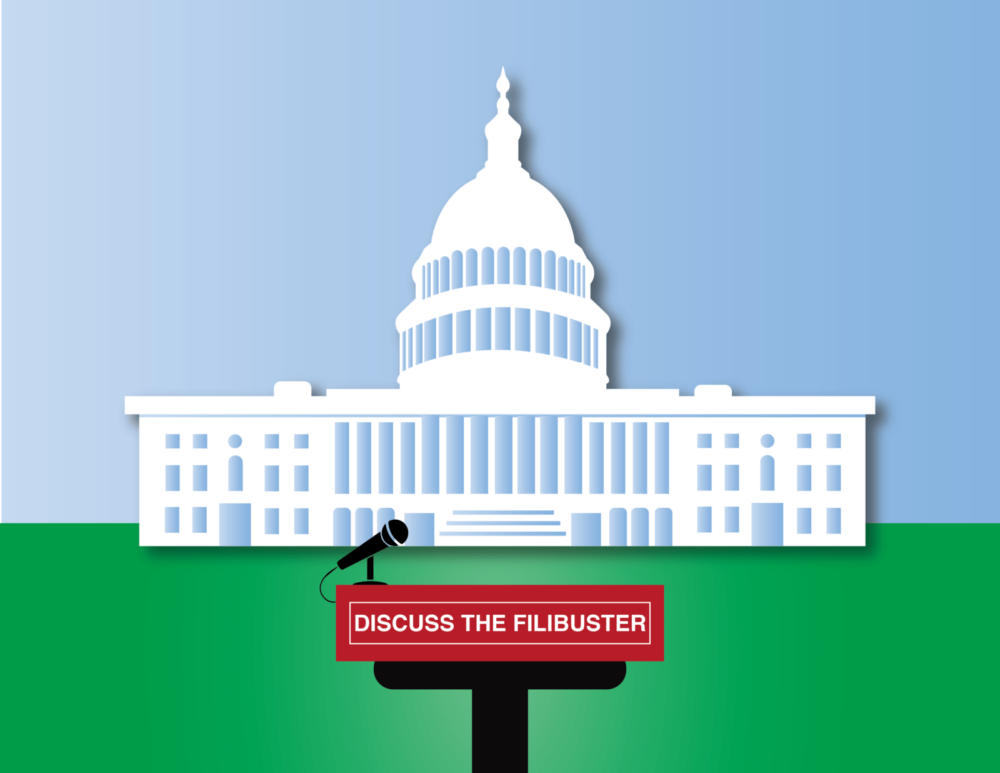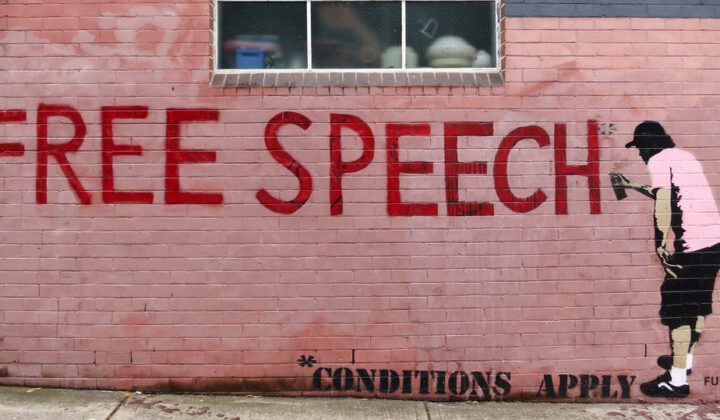The filibuster is an obstruction tactic in the Senate in which a representative slows down proceedings, originally through delivering hours-long speeches, to prevent a vote on a bill. In recent years, the mere threat of a filibuster can be enough to kill a bill.
In 2013, the Democrats rolled back the filibuster for executive branch and judicial nominees, except for those to the Supreme Court. Then, in early 2017, the Republican-controlled Senate removed the Supreme Court exception, Neil Gorsuch breezed through nomination, and both parties bemoaned how the other was responsible for chipping away at the filibuster.
Now, just 9% of Democrats actively support keeping the filibuster.
Rep. Ilhan Omar described its repeal as overdue, tweeting that “Democrats can’t repeat the mistake of 2009, we must abolish the filibuster,” while former President Obama described the filibuster last year as a “Jim Crow relic.”
Criticism of the filibuster largely falls into these two camps: one which supposes that our country would be better off with a simple-majority requirement in the Senate, and another which argues that the filibuster itself is outdated and hopelessly politicized.
The first is a matter of debate. The second is a matter of fact.
What’s wrong with the filibuster?
The most fundamental problem with the filibuster isn’t that it makes legislating a more arduous process, but that it does so in a way that will always be controversial.
The Senate was always intended to be slower and more deliberative than the House, but it lacked a supermajority requirement for bills to pass. In the early 20th century, a few prominent instances of senators speaking for hours on end––or filibustering––led the chamber to adopt the cloture rule in 1917, mandating that debate ends should a two-thirds majority of the Senate vote for it. Throughout the 1960s, increasing demands on senators’ schedules made waiting out long-winded filibusters infeasible, so the requirement was dropped from a two-thirds majority to a three-fifths majority. By the early 1970s, additional rule changes made it possible for a senator to obstruct proceedings without actually holding the floor and speaking continuously, completing the filibuster’s shift from a laborious and infrequent delaying tactic to a de facto supermajority requirement of three-fifths in the Senate. The Senate filibuster we’re all familiar with is hardly a half-century old.
As the modern filibuster is more a matter of Senate procedure than constitutional law, a majority of senators can vote to undo it at any time. Understandably, relying on the goodwill of the majority party is inherently contentious in this highly-partisan era.
How could the filibuster be improved?
Let’s assume that defenders of the filibuster––like Sen. Krysten Sinema, who wrote in the Washington Post that the “filibuster compels moderation and helps protect the country from wild swings between opposing policy poles”––are correct (which seems like a pretty reasonable assumption). Short of moving the Senate to a simple-majority chamber, what could reform look like?
From the center-left, President Biden has supported moving the Senate back to the ‘60s-era talking filibuster. The mere threat of a filibuster would no longer be enough to kill a bill, and senators would once again have to stand in front of their colleagues for hours on end. Cloture rules could stay the same, but filibustering would be burdensome.
A more centrist approach would consider enshrining the supermajority requirement of the filibuster in the Constitution. Clearly, a significant number of Democrats and Republicans believe strongly that the Senate should require a higher proportion of votes than the House, and at any given time the minority party is inclined to uphold the filibuster. If they could reach a compromise, perhaps on a three-fifths or eleven-twentieths margin for passing law, the parties could protect the practice from politicization.
And from the center-right, George Liebmann writing in The American Conservative argued that the filibuster’s de facto 60-vote requirement should continue to exist for at least four highly contested issues: the “ratification of interstate compacts, alteration of the size of the judiciary, admission of new states, and legislation relating to the franchise as well as reapportionment and redistricting.” In doing so, more mundane legislation could pass with a simple majority, but one-sided legislation that threatens the legitimacy of American democracy in the eyes of the opposition party would be avoided.
We don’t have the answer, but we can identify the problem. The filibuster is a hopelessly politicized tool with no constitutional legitimacy, and Americans from both parties would do well to seek positive reform. Even if you support supermajority requirements, the modern filibuster is a deeply flawed way to maintain them in the long run.





